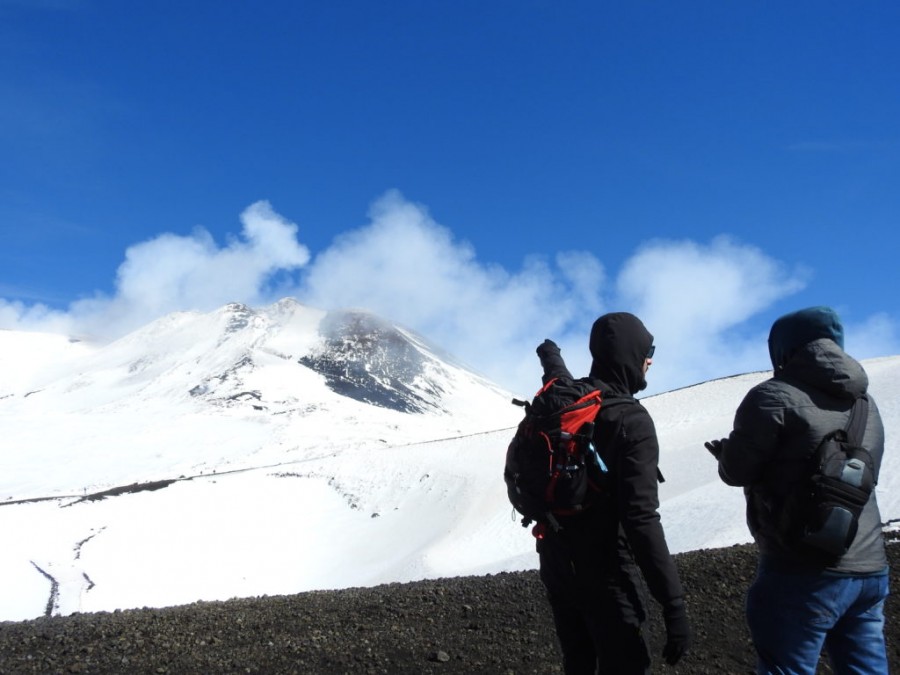
Welcome to the largest active volcano in Europe: Mount Etna.
Birth and development of a wonder of the world
Symbol of the island that has always marked and still marks the life of the inhabitants of Etna. The Sicilian territory is characterized by its presence and its majesty. In what is now the surroundings of the city of Catania and which was once a gulf, Etna was born from underwater eruptions, about 500,000 years ago. Etna (also called “Mungibeddu” or “à Muntagna”, in Sicilian language) is the highest volcano in Europe and a UNESCO World Heritage Site since 2013.
The altitude of Etna reaches today about 3,330 m.a.s.l, its diameter is approximately 45 km and occupies an area of ββ1,570 square kilometers. The volcanic soil has unique characteristics in the world in that around the craters, lava flows are noticeable: black if they are recent, gray when instead they date back to more distant times. The incessant activity of the volcano is testified by the aforementioned flows, occasionally interrupted by some newly built road. A multitude of eruptions occurred in ancient times but it was in 1669 that the most devastating eruption took place. A river of lava reached the sea, partly devastating the city of Catania.
Eruptions in recent times
The most recent explosions of the volcano took place in 1928 when a lava flow destroyed the town of Mascali. Also note that of 1991 which ends after three years. The summit crater area never remains the same over time, on the contrary, it changes continuously. Suffice it to say that only one hundred and twenty years ago the top of the volcano culminated in a single Central Crater, while today we find five of them, as evidence of rapid and marked morpho-structural changes.
In the apical area of ββthe volcano, five main eruptive systems are active today, which have been formed and grown over the past few decades. Until the early twentieth century, only the Central Crater was present at the top of Etna. In 1911, the Northeast Crater was born on the northern side of the Central Crater. Subsequently, the Voragine (in 1945) and the Bocca Nuova (in 1968) are formed within the Central Crater. In 1971, on the south-eastern flank of the Central Crater, the Southeast Crater was formed, which remained active until 2007. Then the New Southeast Crater also began to grow, resting on the eastern flank of the “old” Crater of Southeast.
Etna today
Etna also always maintains its plume of smoke and can enter activities at any time. Although constantly monitored, the volcano is unpredictable, when it starts an activity it is usually announced by volcanic tremors that intensify this is one of the reasons why it is not always possible to reach the summit during excursions. Our excursions are done in total safety with certified volcanological guides. The only figures who can accompany visitors to the summit area.
Guides who recognize the daily situation that occurs on Etna and who decide the course of the excursion and the path to follow. The discovery of the summit area is a unique experience of its kind, recommended for all trekking lovers who want to discover a piece of the unexplored and wild sicilian world.